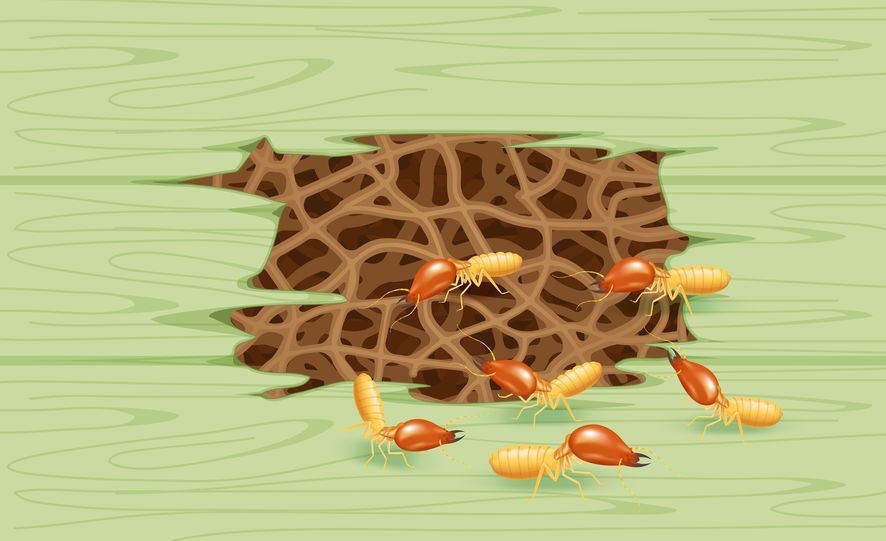All termite colonies start after a termite swarm. Usually in spring, winged reproductive male and female termites leave the nest in giant swarms. The males and females will pair up, mate, lose their wings, and the female then goes on to start a new colony.
Termites are social insects that live in large colonies, and they feed on cellulose, which is usually found in wood. Depending on the species, the termites will either build their colonies inside wood or underground.
The termite life cycle
There are over 50 species of termites in the US, which can be divided into three main groups: subterranean, drywood and dampwood termites. All these species share similar colony structures, with workers, soldiers, swarmers and queens. Workers deal with the day to day business of running a colony – foraging for food, building tunnels, cleaning up, and rearing the young. Soldiers are tasked with defense, and in some species, the soldiers have a large head, which they use to block tunnels whenever a competing insect species or colony invades. Swarmers are the reproductive caste, and they are spawned in mature colonies and sent out to start new nests. Finally, the queen has a singular role – to lay more eggs.
Most colonies will take about four years to reach maturity, with the first year being the slowest. A female swarmer will find a suitable nest location and start building out the nest, gathering food, laying eggs and taking care of the young. This process is exhausting for the queen, and it will lay only 22 to 75 eggs in the first year. However, once the young reach maturity, they will start taking over a lot of the work-related tasks in the colony, and the queen can focus solely on reproduction.
Termites in the home
Subterranean termites are the most destructive group of termites out there, because they are able to build sprawling colonies underground, and by the time they reach a piece of wood, there are already hundreds of thousands of workers ready to exploit it. Other species such as drywood and dampwood termites take a little longer to get going, but once they spread out the infestation, the home will require fumigation, which is the most expensive treatment option. All species however, leave very few outward signs of an infestation. If you suspect that you have a termite infestation, or if you require pest control services, contact us today.

